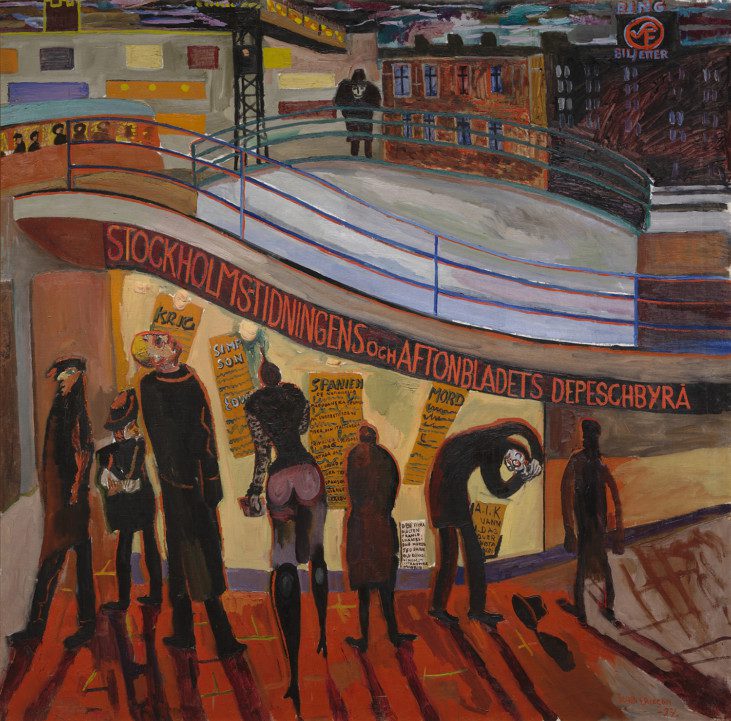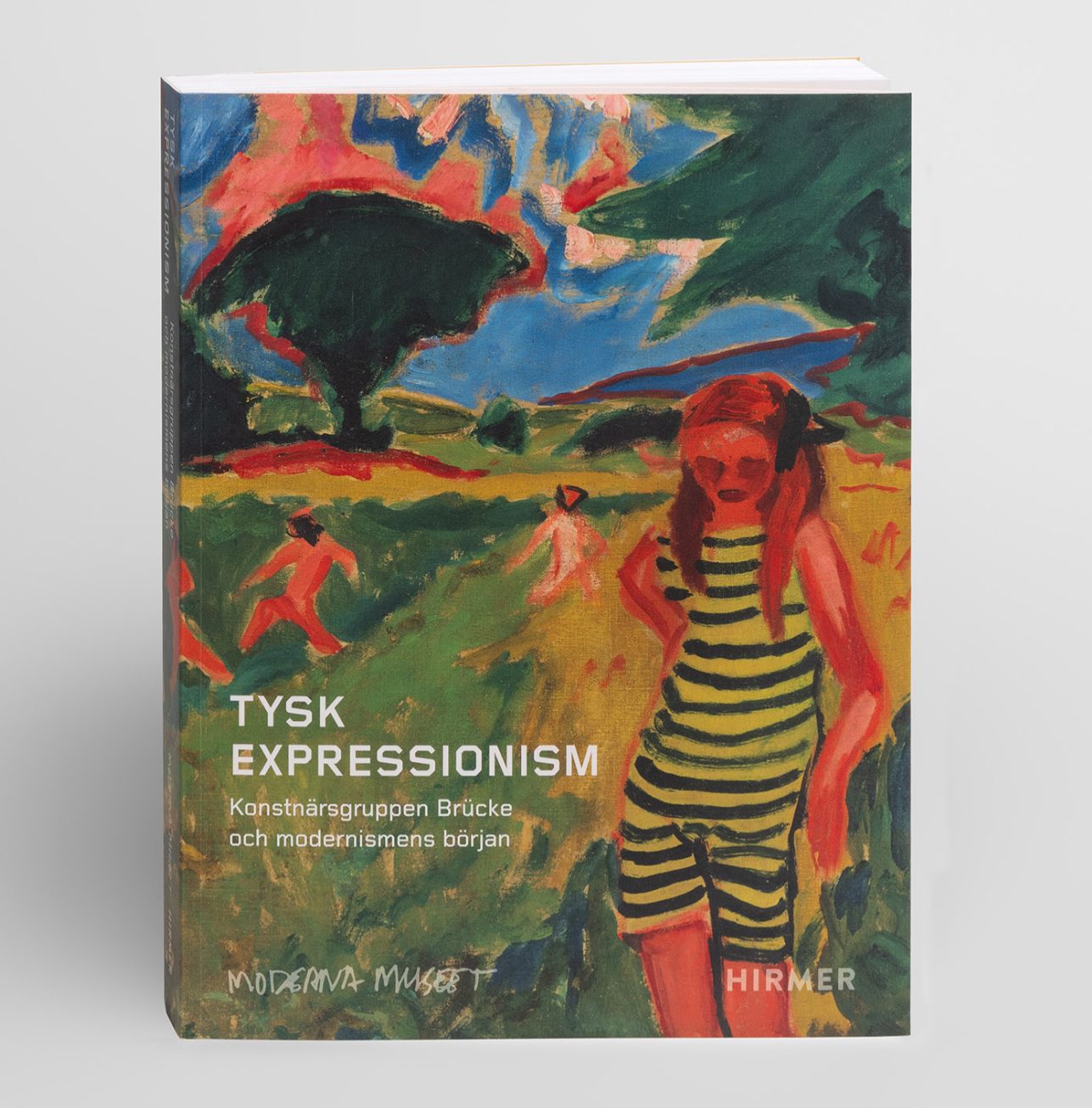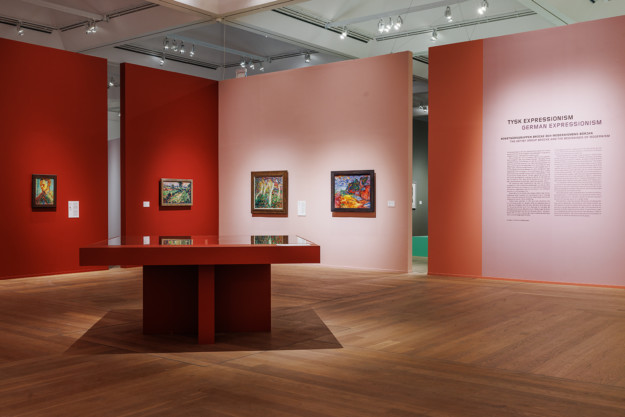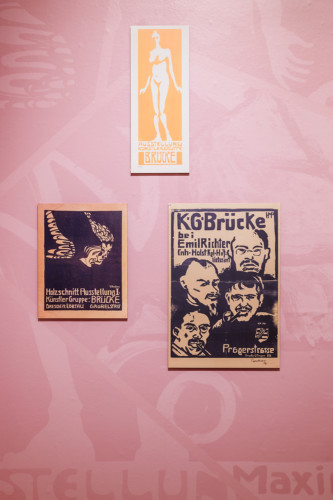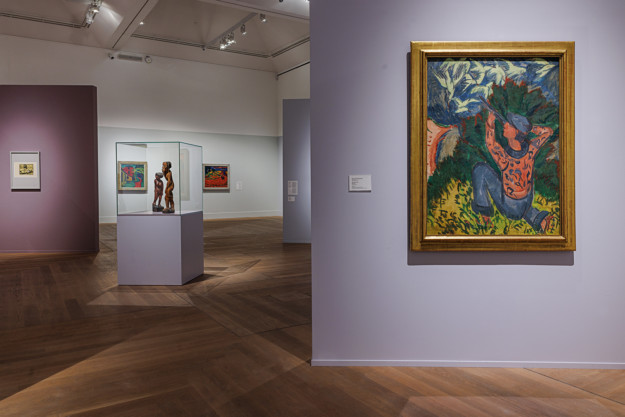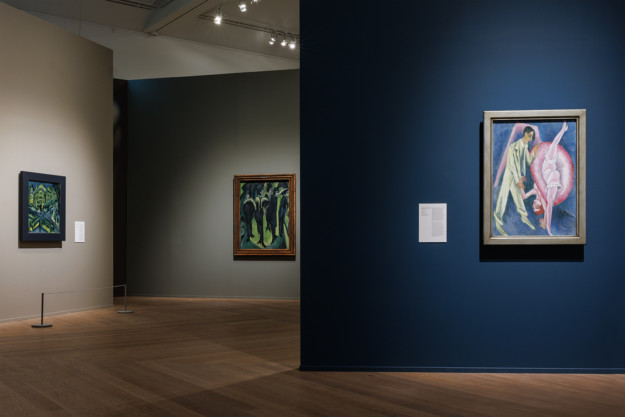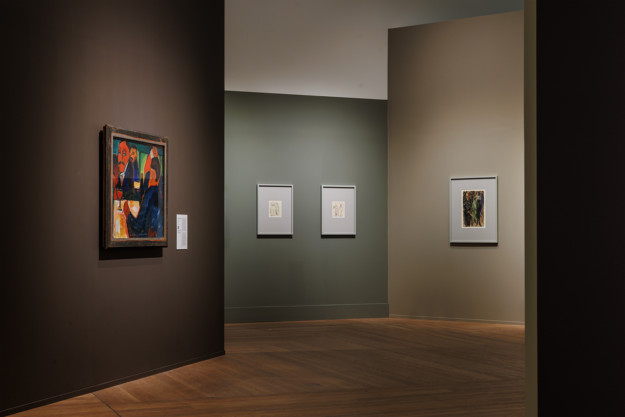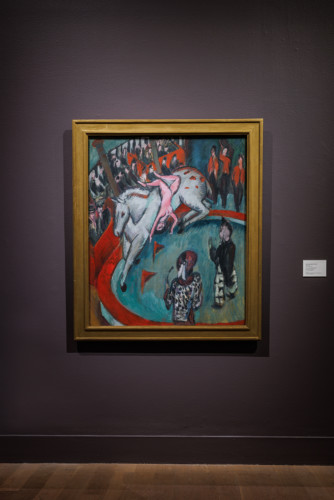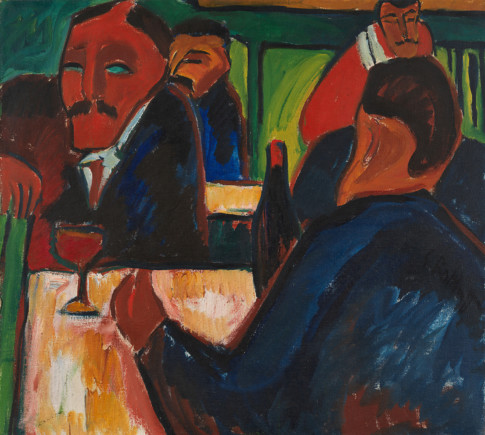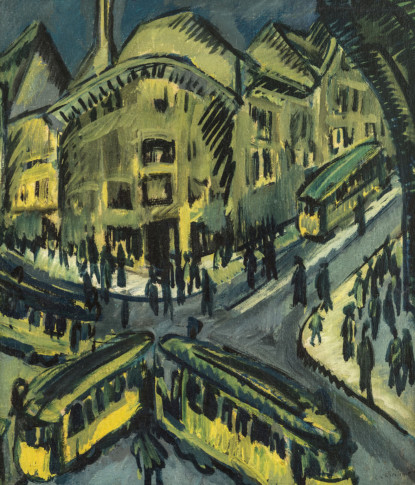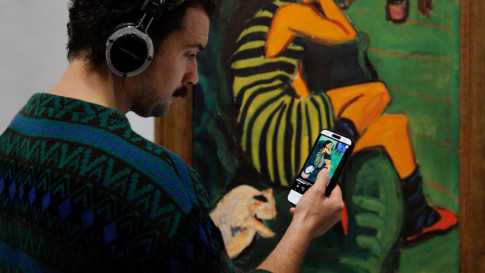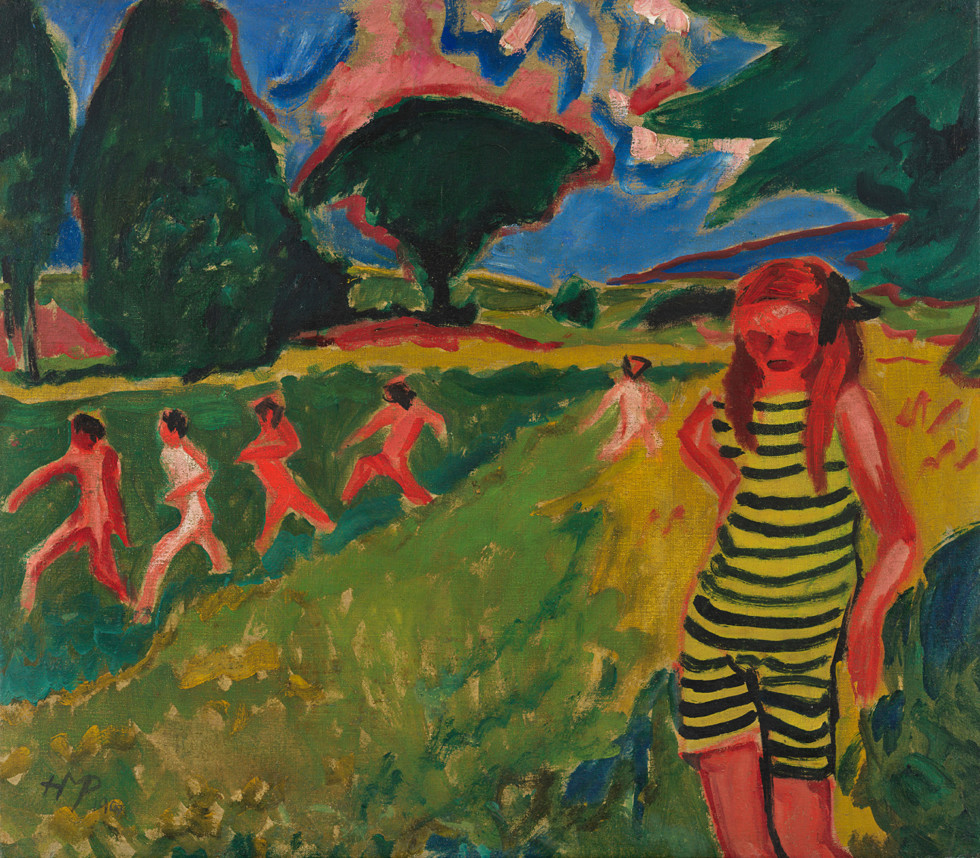
Max Pechstein, Das gelbschwarze Trikot, 1910 Photo: Brücke-Museum, Berlin/Nick Ash © Max Pechstein/ Bildupphovsrätt 2024
German Expressionism
The Artist Group Brücke and the Beginnings of Modernism
21.9 2024 – 9.3 2025
Stockholm
Buy ticket
Regular: 150 SEK
Reduced price: 120 SEK
Annual Pass: 375 SEK
Free admission for those 18 and under and Klubb Moderna
Buy posters, catalogues, and postcards from the exhibition in the Shop!
The Shop: German Expressionism
Audio guide
In the audio guide you will find in-depth knowledge of the artist group Brücke.
The texts are extracts from the exhibition catalogue. They are written by some of the foremost experts on Brücke and German Expressionism.
Audio guide: German Expressionism: The Artist Group Brücke and the Beginnings of Modernism
The artist group Brücke was founded in 1905 in Dresden by four young, rebellious architecture students. With their collective way of living and working, they radically broke with the prevailing strict moral norms and aesthetic ideals of the German Empire. Brücke’s art marks the beginning of German Expressionism, which would eventually be recognised as Germany’s most important contribution to international modernism.
In “German Expressionism: The Artist Group Brücke and the Beginnings of Modernism”, you will encounter paintings, drawings, watercolours, woodcuts, and sculptures by Ernst Ludwig Kirchner, Fritz Bleyl, Erich Heckel, and Karl Schmidt-Rottluff, the four founders of Brücke, as well as by Emil Nolde, Max Pechstein, and Otto Mueller, members who joined later.
For the first time, the Nordic audience is now given the opportunity for a deeper encounter with the artist group Brücke. – Iris Müller-Westermann, the exhibition’s curator and senior curator at Moderna Museet
Emotions, man, and nature
Brücke developed a painting style with vivid colours, simplified forms, broken-up perspectives, and large colour fields that express feelings rather than reproducing an external reality.
The group was inspired by artists such as Paul Gauguin, Vincent van Gogh, and Edvard Munch. They worked with motifs such as man and nature, painted portraits and self-portraits, engaged in nude studies, and depicted life in the studio, striving to make life and art merge.
After they moved to the capital Berlin in late 1911, urban life also became an important motif.
The group disbanded in 1913, after eight years together and nearly eighty joint exhibitions.
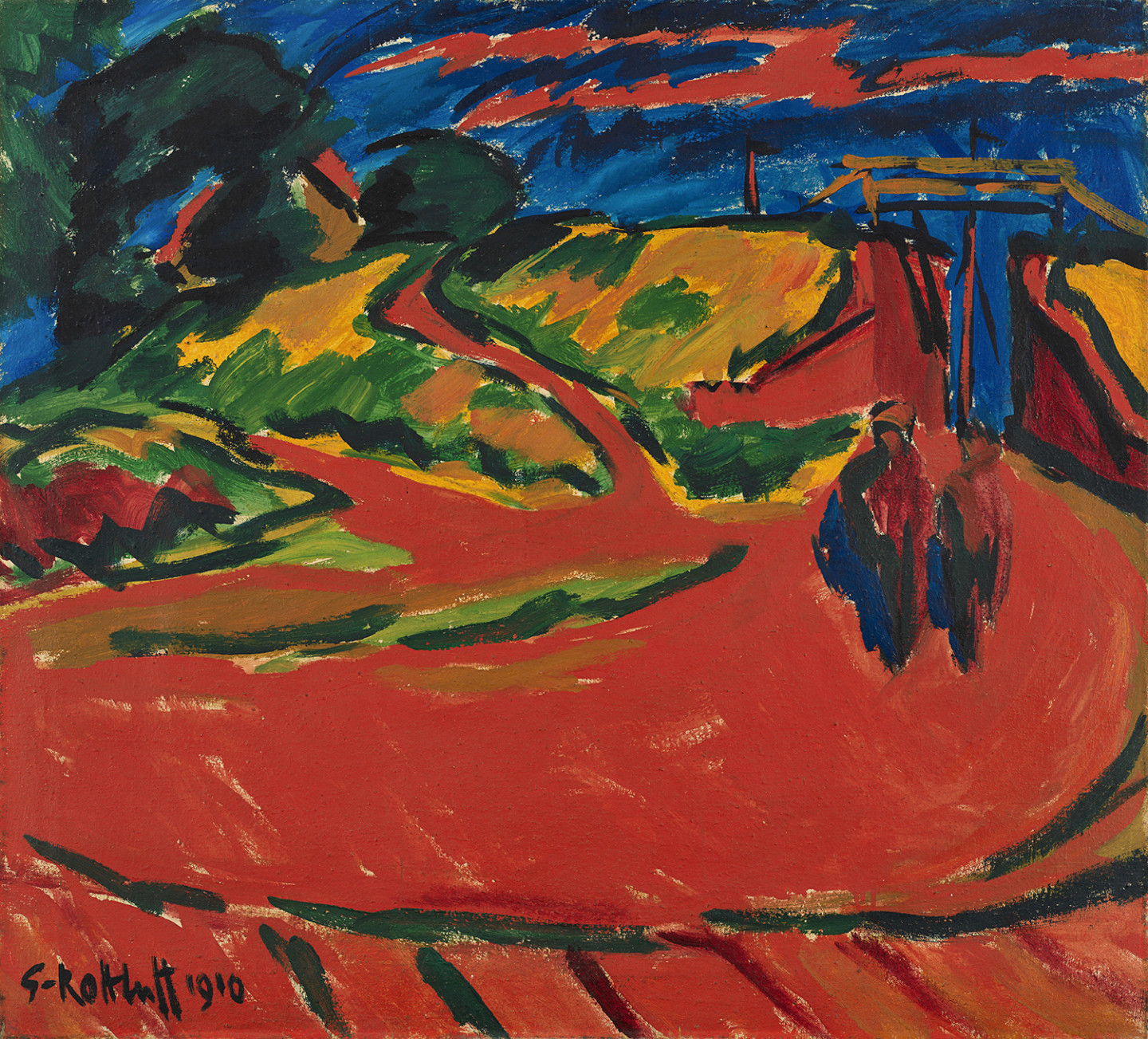
MANIFESTO AND NEW STRATEGIES
From the very beginning, Brücke used clear strategies to market and spread their art, which served as an inspiration to future generations of artists. They formulated a manifesto, invited supporting members, organised their own exhibitions, and toured them between different cities in Germany. They also designed their own catalogues and posters, employing woodcuts as an important medium.
The name Brücke, “bridge” in German, has often been interpreted as an allusion to the group’s endeavour to create a link between the art of the past and the future.
In 1906, Ernst Ludwig Kirchner formulated a manifesto for the group. It reads:
“Believing in progress, in a new generation of creators and enjoyers, we summon
all young people to join together, and as young people, bearers of the future, we
want to free our arms and our lives from the established older forces.
Anyone who renders directly and honestly whatever impels his creativity is one of us.”
New works in “German Expressionism”
In December, the exhibition “German Expressionism: The Artist Group Brücke and the Beginnings of Modernism” will undergo a major refresh. All …
New works in “German Expressionism”
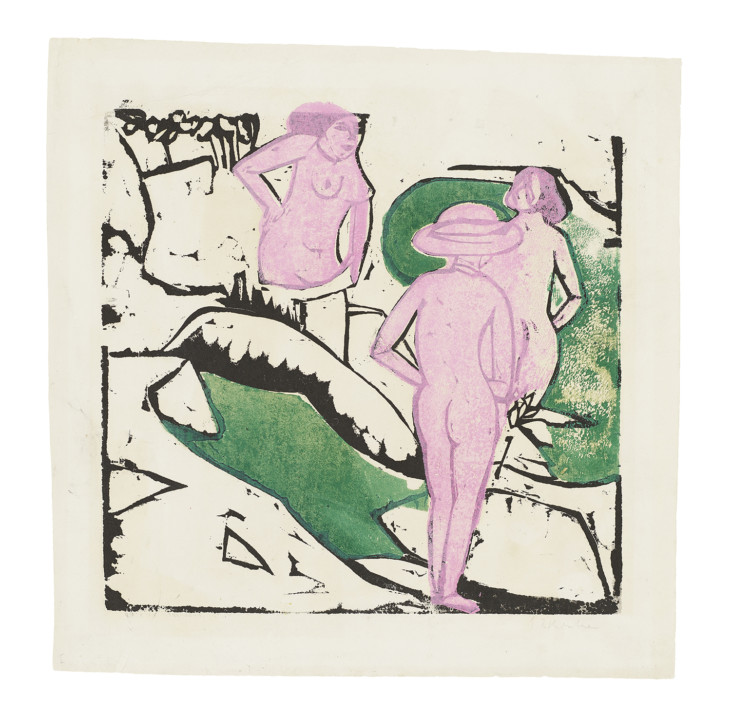
The founders of Brücke
The artist group Brücke was founded in 1905 in Dresden by the four young, rebellious architecture students Ernst Ludwig Kirchner, Fritz Bleyl, Erich …
Biographies
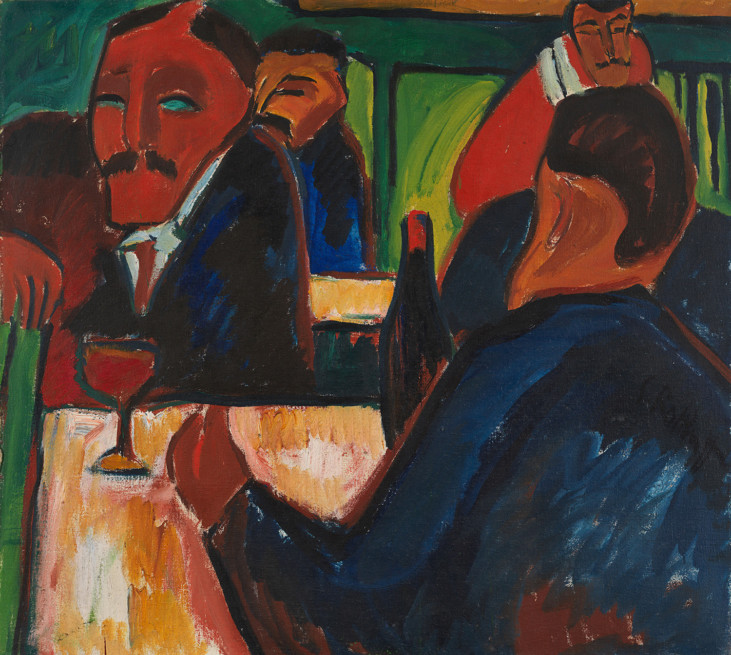
Brücke 1905–1913
Brücke’s art marks the beginning of German Expressionism, which would eventually be recognised as Germany’s most important contribution to …
Timeline
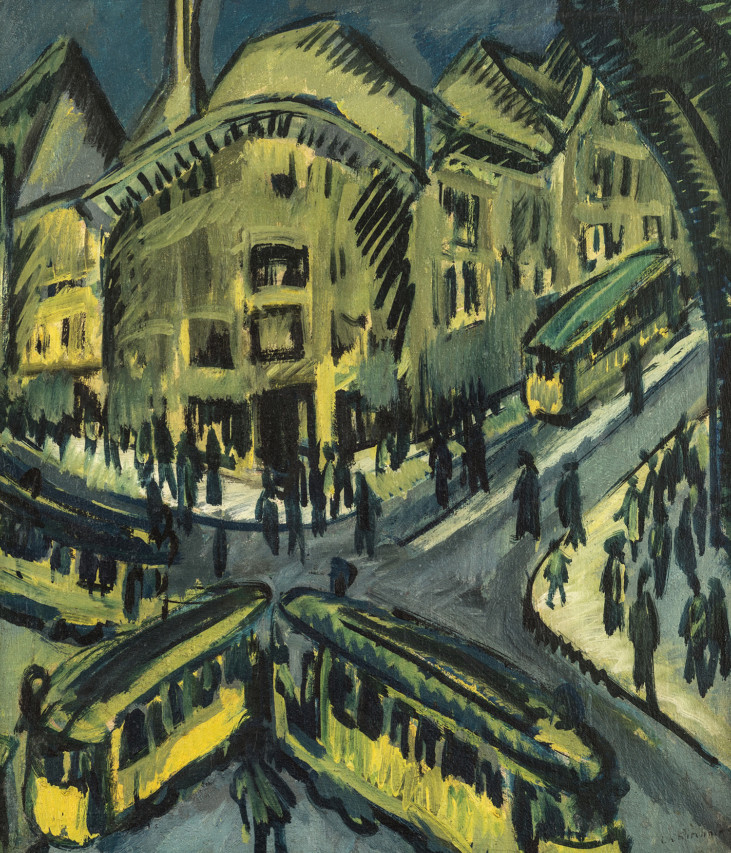
Exhibition Guide
In the Moderna Museet exhibition guide, you will find audio guides, texts and other material aimed at making the visit to the museum more accessible. …
Your guide to the museum
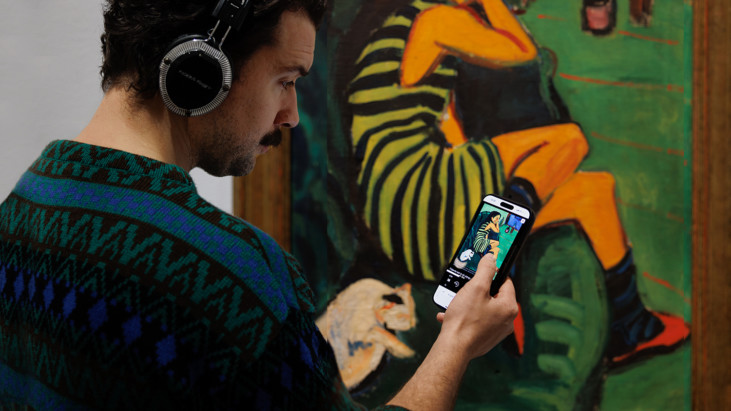
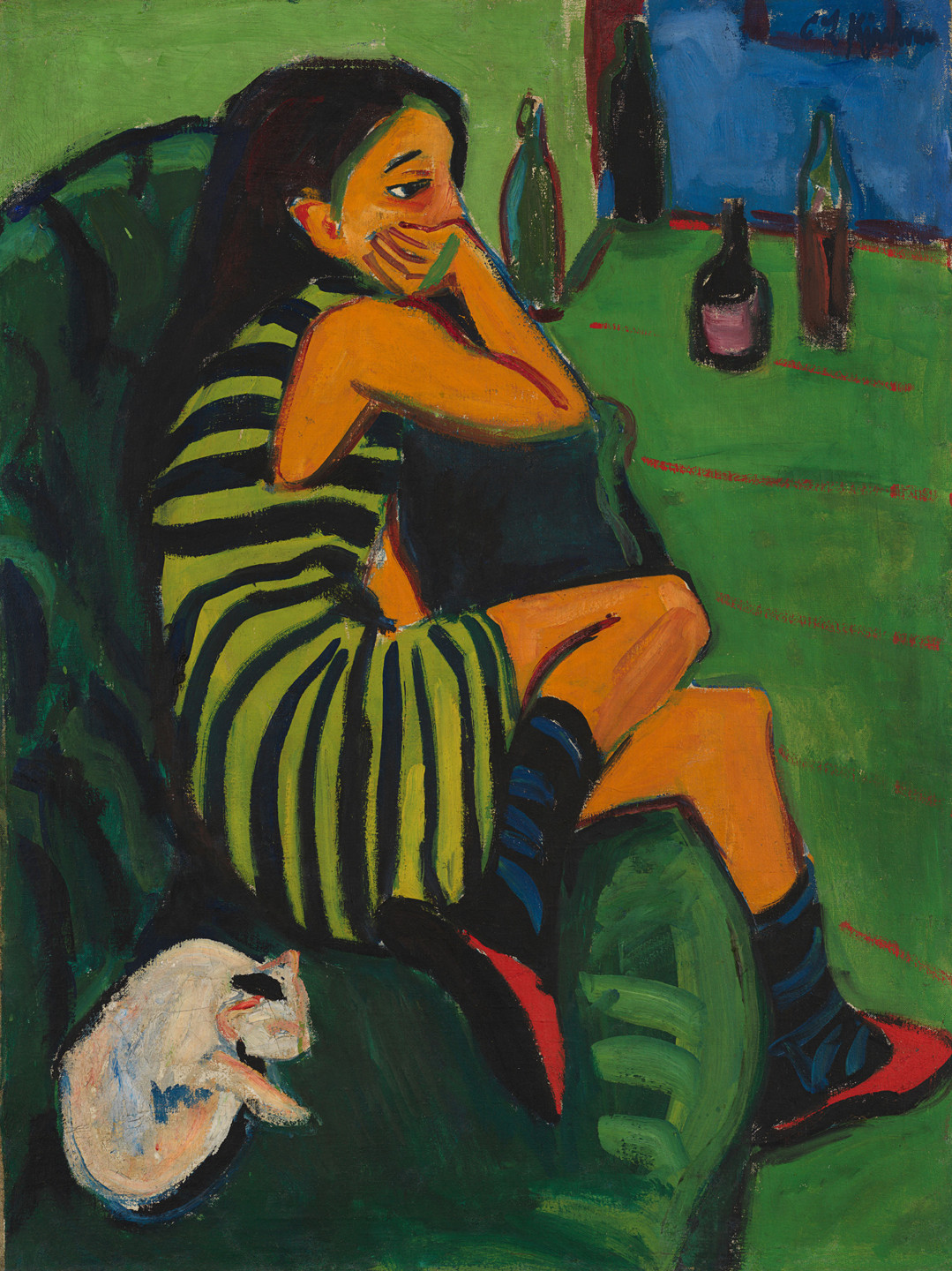
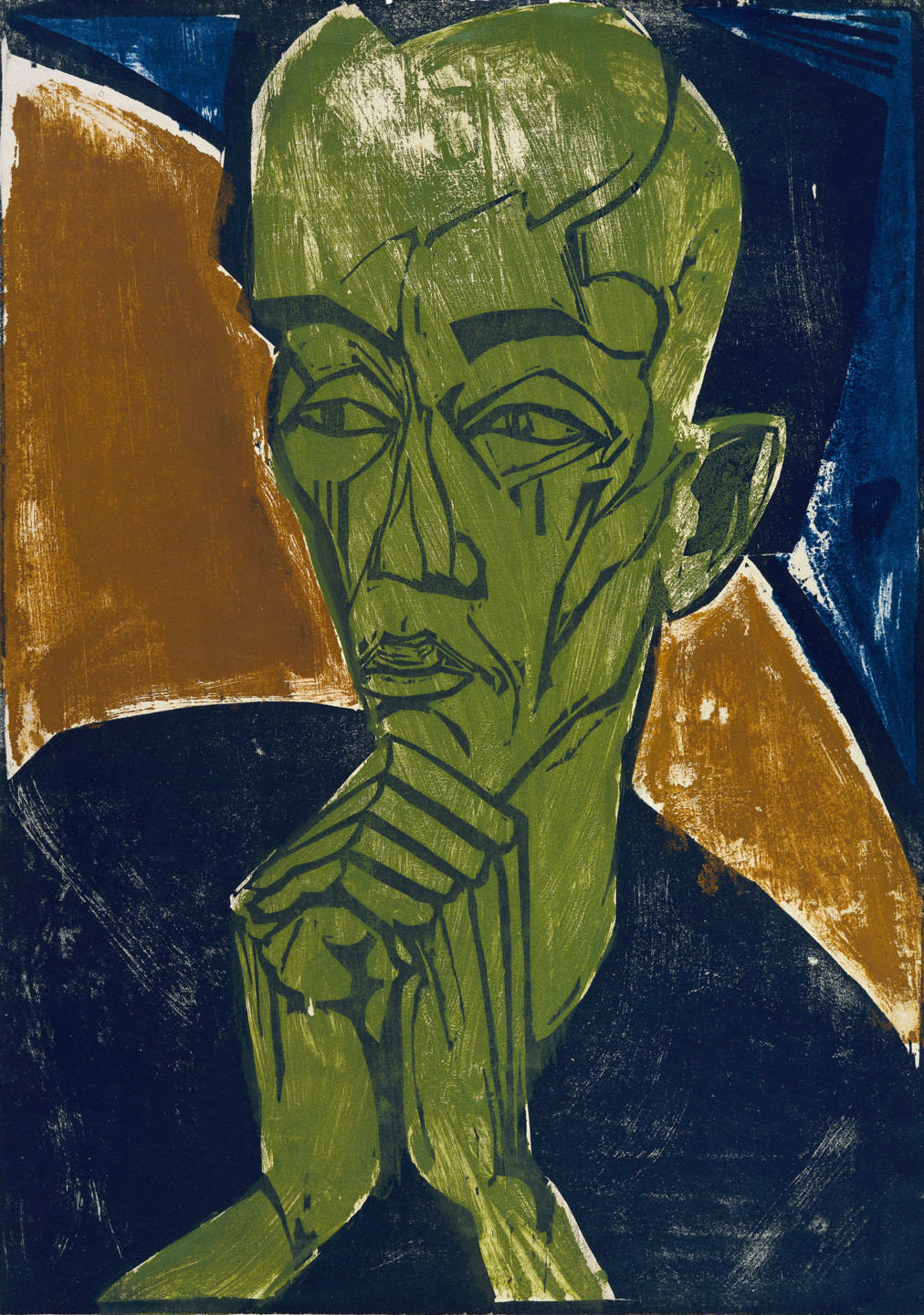
“German Expressionism: The Artist Group Brücke and the Beginnings of Modernism” is a collaboration with Brücke-Museum, Berlin.
Our warm thanks to German Expressionism Exhibition Circle and the donors:
Veronica and Lars Bane
Pontus Bonnier
Lars Förberg
Joakim Geiger
Christina Staudt
Exhibition Guide
In the Moderna Museet exhibition guide, you will find audio guides, texts and other material aimed at making the visit to the museum more accessible. …
Your guide to the museum

Annual Pass
The Annual Pass gives you free admission to all our exhibitions for a whole year. Buy your Annual Pass today and visit us as often as you want! …
Annual Pass
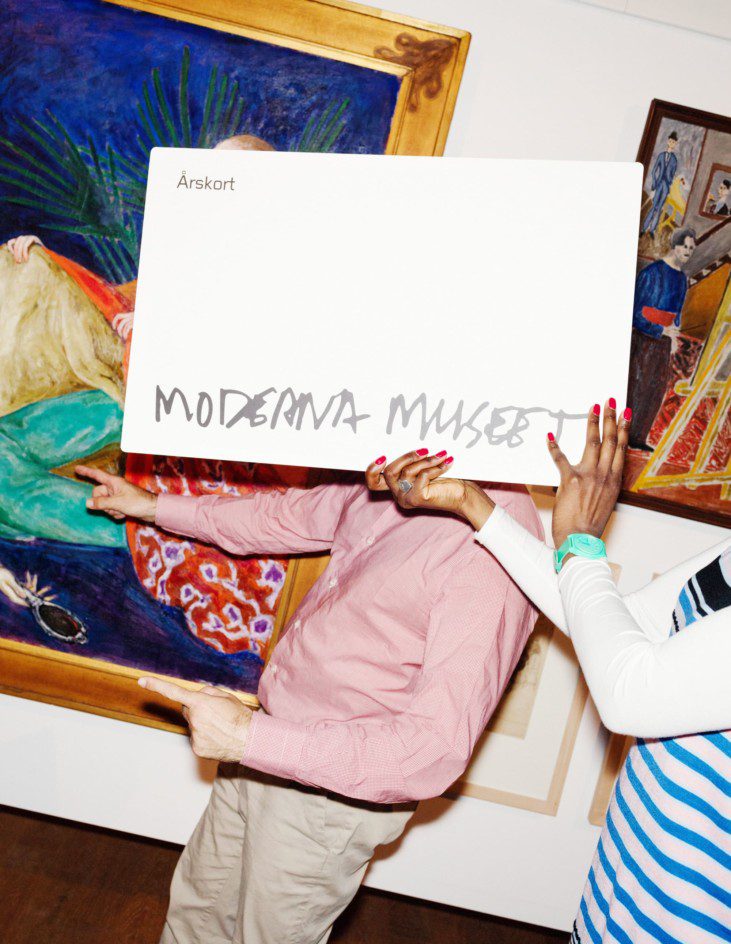
Newsletter
Subscribe to our newsletter! Get the latest news about Moderna Museet directly to you by e-mail. …
Newsletter
